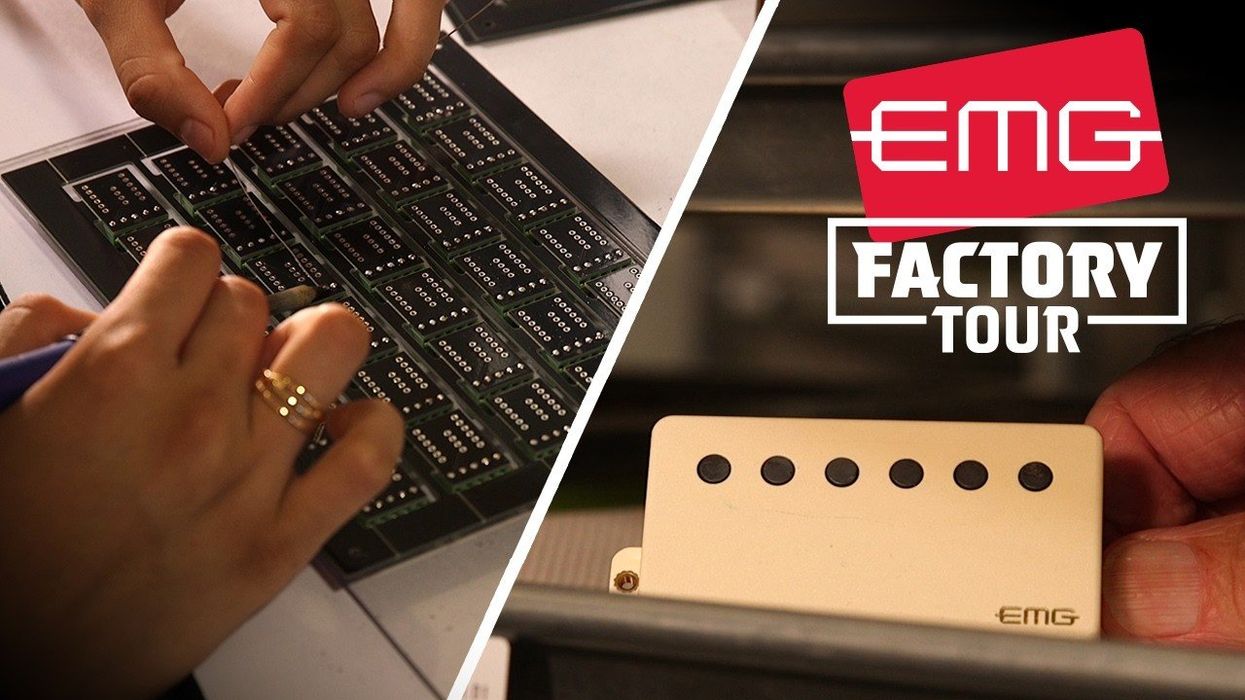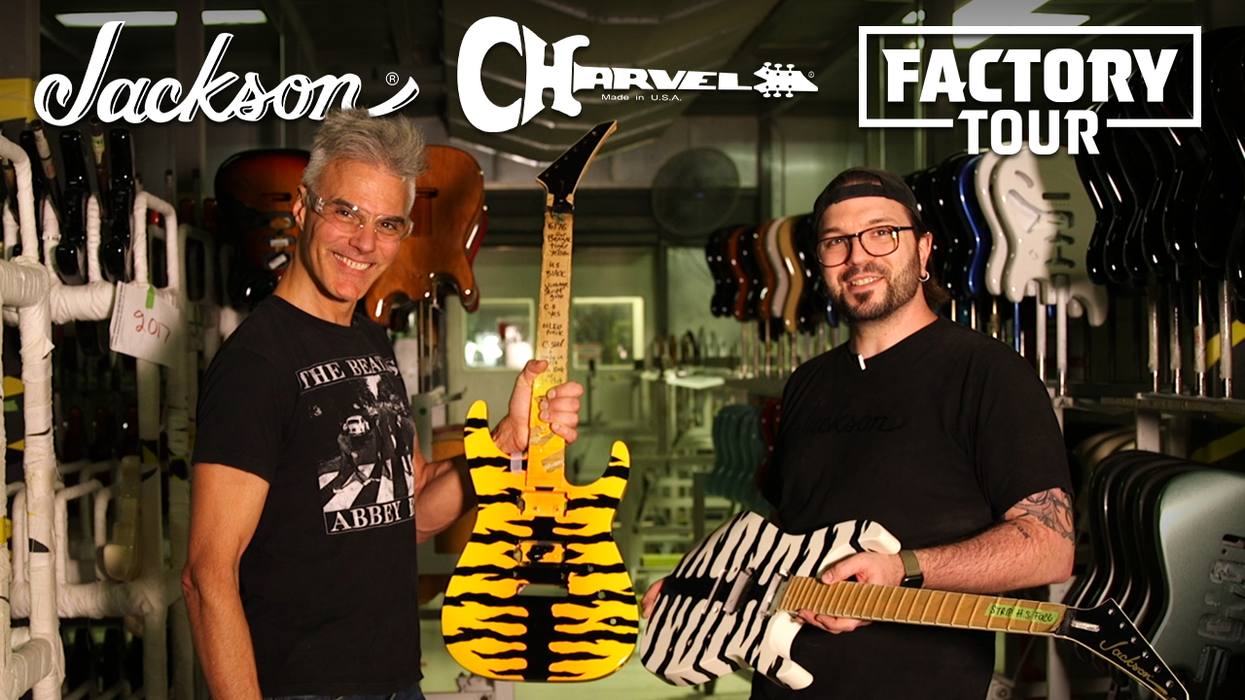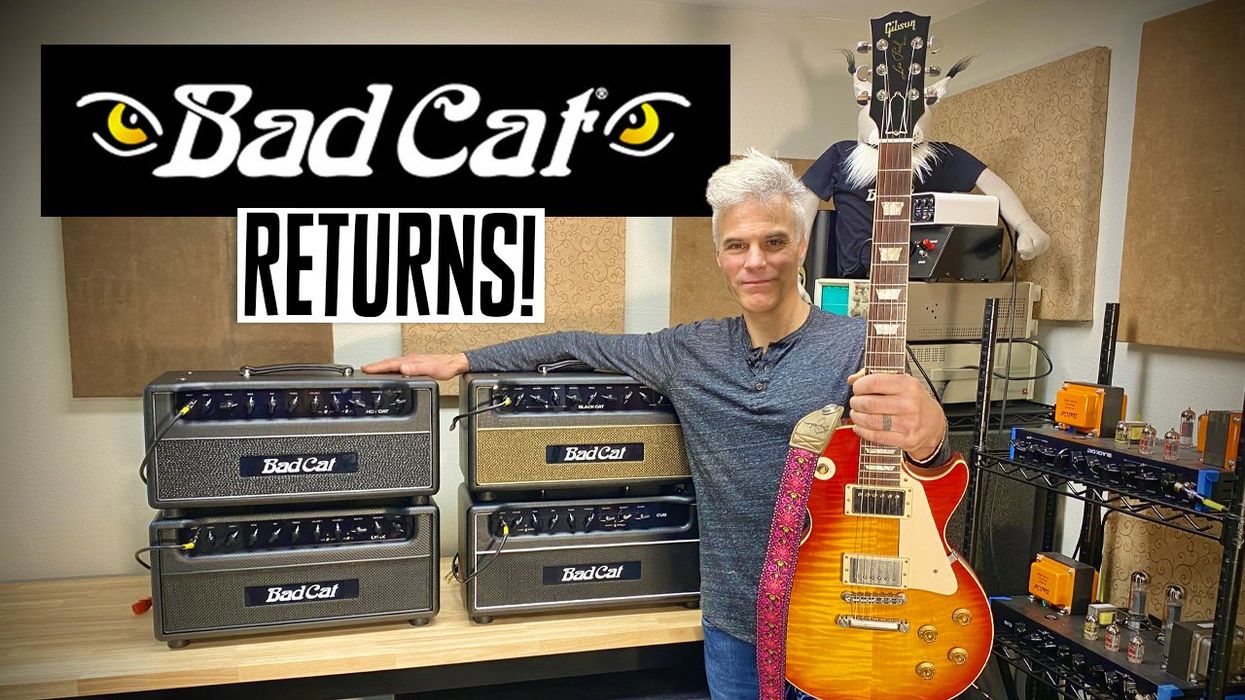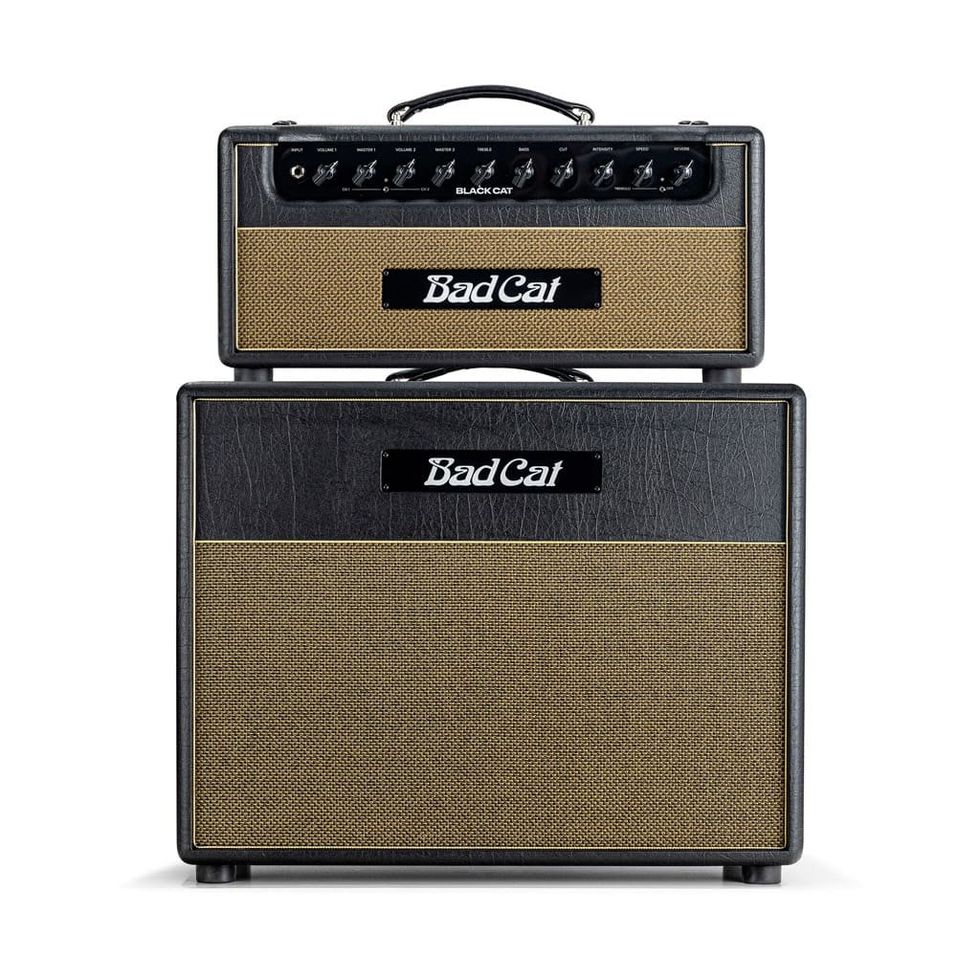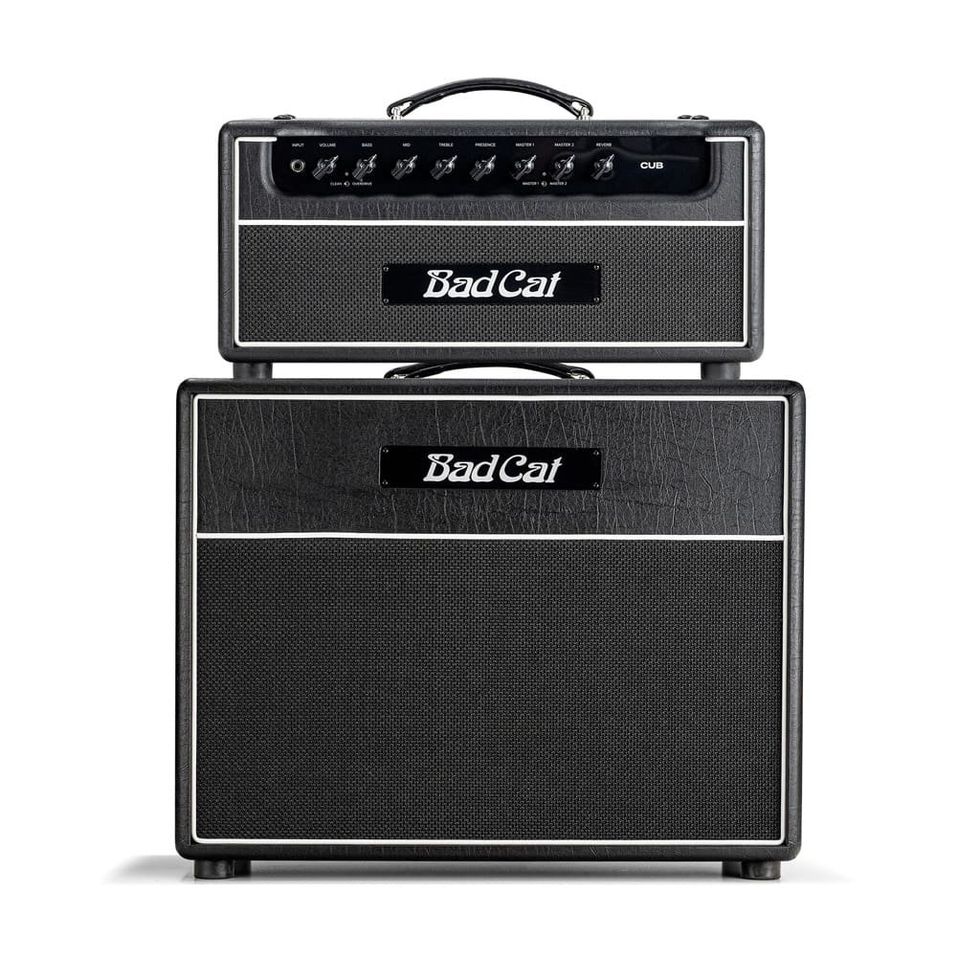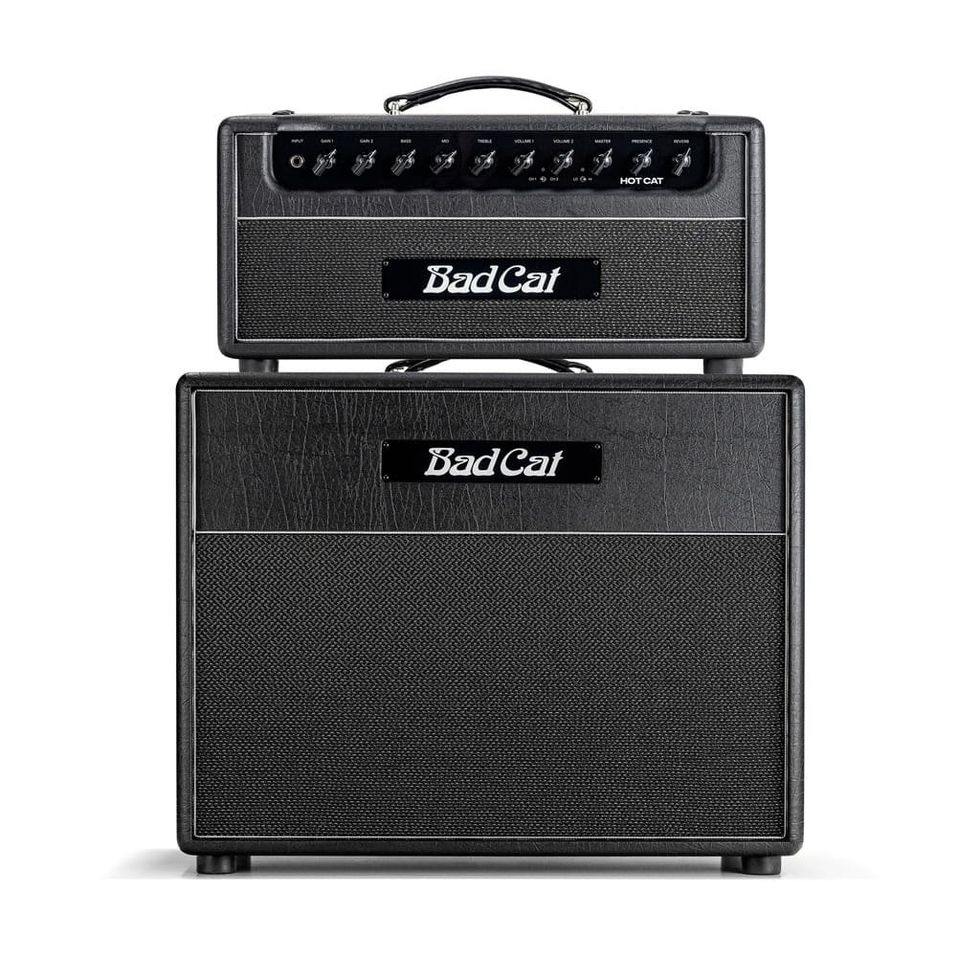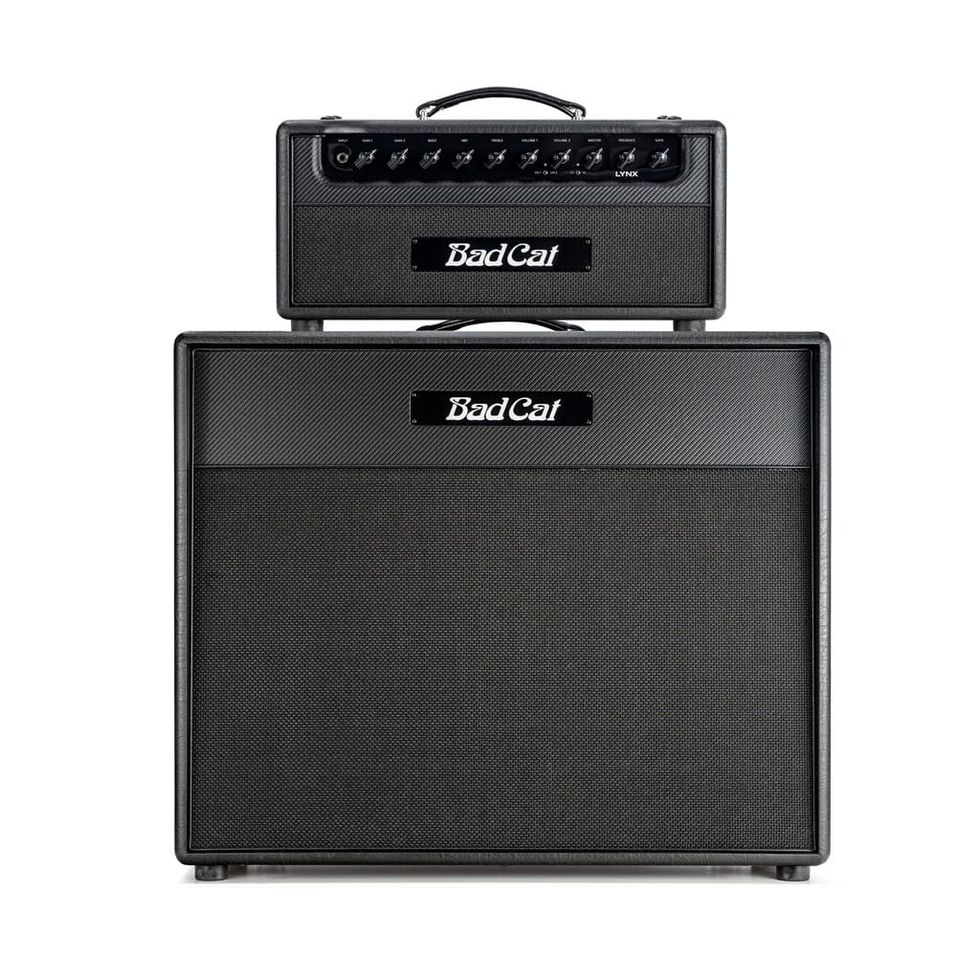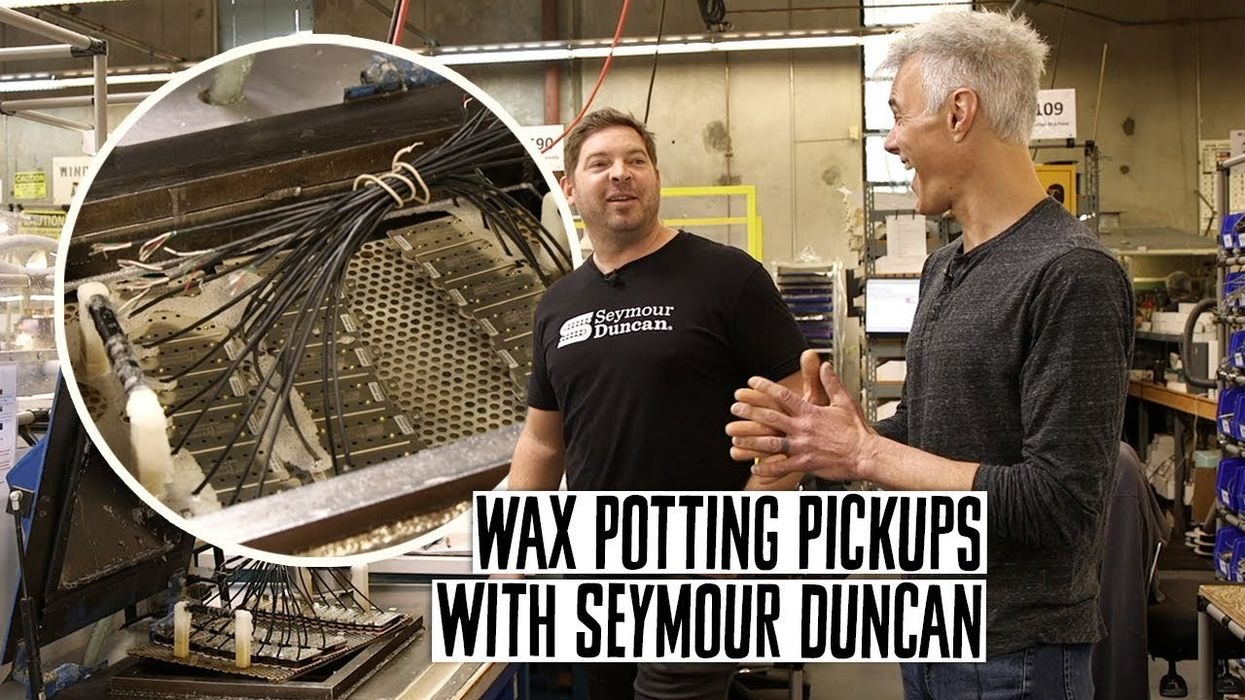Get a behind-the-scenes look at the premium guitar maker’s precision processes, from sawing neck blocks to final setup and shipping, as we follow the building journey of a Mike Campbell Alliance Series semi-hollowbody from Croatia to Germany.

The Mike Campbell Alliance Series signature model is inspired by Duesenberg’s Starplayer TV, which he notably played during the 2008 Super Bowl half-time show.
Founded in 1986 by Dieter Gölsdorf in Hannover, Germany, Duesenberg’s guitars, basses, and lap steels are played by a wide variety of artists including Mike Campbell, Ron Wood, Bob Dylan, Joe Walsh, John Mayer, Vince Gill, Robbie McIntosh, Carmen Vandenberg, Jason Isbell, and Tom Bukovac.
The Making of a Dream Guitar | Duesenberg Guitars Production Tour
In the video “The Making of a Dream Guitar,” we get to see how these stylish music-making machines are built. It’s a never-before-seen look at the company’s production process.
Gölsdorf, who had extensive experience in guitar hardware design, created Duesenberg Guitars with the goal of establishing consistently outstanding tone, roadworthy reliability, and unique design, and the company has successfully followed his vision ever since, becoming a respected maker of high-end instruments.
The Duesenberg Starplayer TV variation made for Heartbreakers and Dirty Knobs guitarist Mike Campbell is the star of the video, and we follow an example on its journey of creation, starting in the Croatian village of Varazdin, which was established in the 17th century.
We begin the tour by looking at the neck of the Starplayer, which is made from a single piece of maple for better clarity and attack. We see raw planks of maple cut to length and then trimmed into neck blanks, which are milled by a CNC machine that creates the truss rod channel and rough headstock shape. Meanwhile, rosewood fretboards are prepared, including the installation of the side dots, fretboard inlays, and binding. Once the neck is ready, a dual-action truss road is inserted, and the fretboard glued on. Then it’s back to CNC, where tuner holes are cut and the neck’s medium D profile is shaped, smoothed, and finalized. After that, the fretboard is sanded to a 12" radius and the frets put in place. Fine sanding is the final step in the neck’s production.
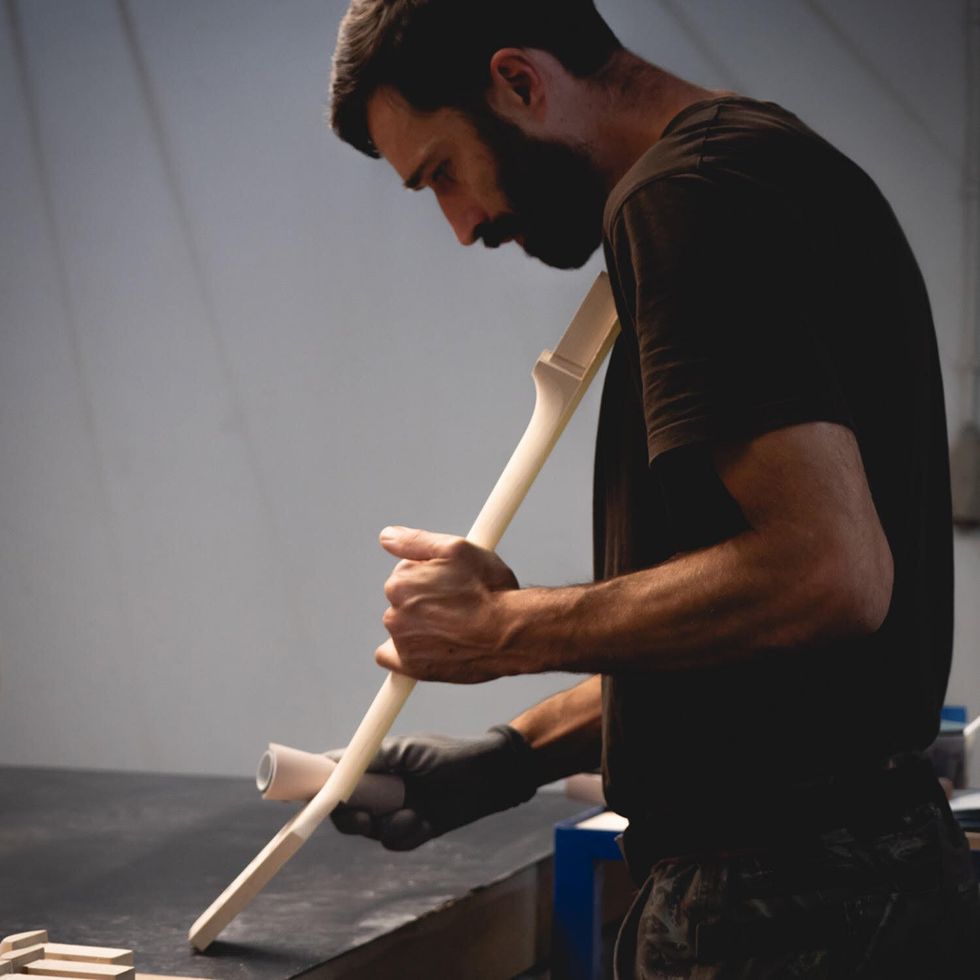
After the neck has been contoured and loaded with the fretboard and other appointments, the final step is fine sanding for smooth playability.
The body of this semi-hollowbody model is next, and in the video you’ll see the center block being routed, the laminated maple sides being heat-pressed into shape, and the contouring of the laminated spruce top and flame maple back. The f-hole and its binding are also part of this process. The pieces are glued together, and when the body is set the channels for the top and bottom binding are inserted and then it is allowed to dry once more.
Next, the neck is inserted into the body, for a seamless, sound-transferring fit, followed by another round of hand-sanding. Then, it’s time for painting.
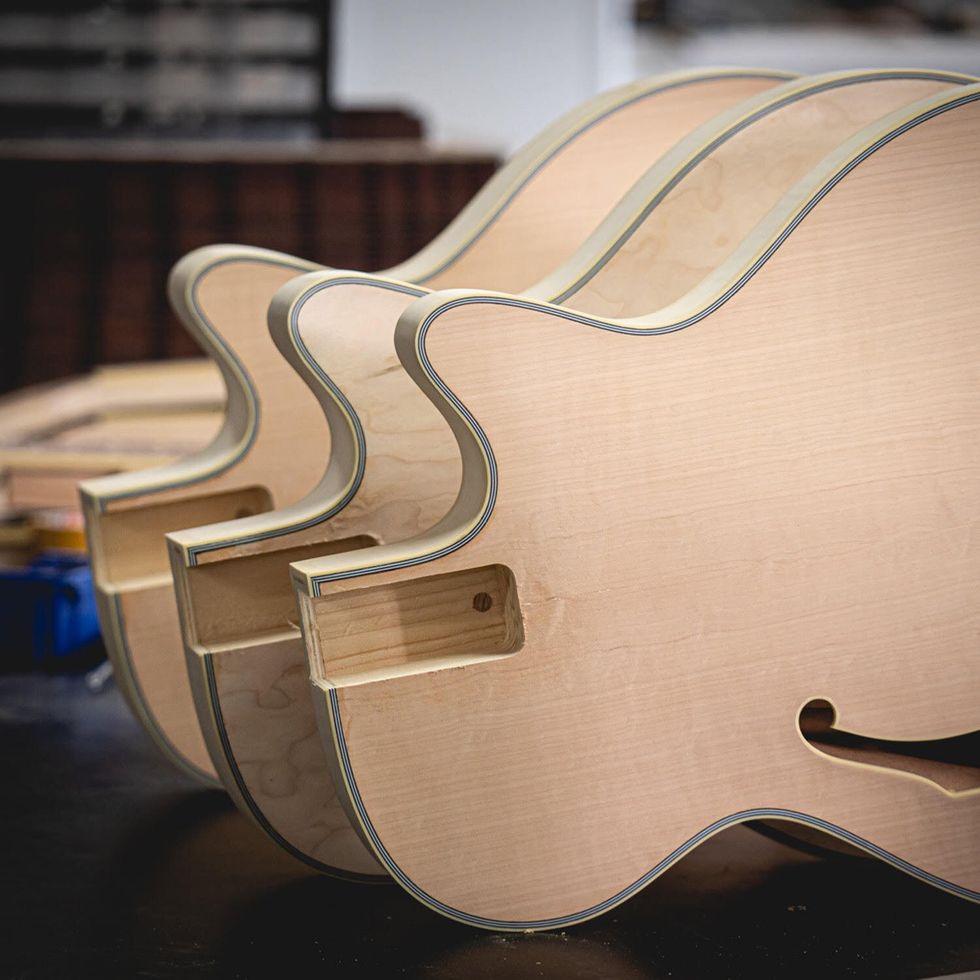
These Starplayer bodies have already had their neck joints cut, and are waiting to the fitted.
Now a clear base cost of primer, which is sanded after drying, is applied. The next step is masking, to protect the binding during the painting process. We see the process for finishing a Mike Campbell Starplayer model in “The Making of a Dream Guitar,” starting with a white coat that allows Duesenberg to mask the axe’s twin stripes during later stages of painting. Next: a metallic blue color coat, artfully sprayed on. When the masking in removed after the paint is dried, revealing the binding and other appointments, the headstock gets the company’s iconic “D” logo and the final clear coats.
Fine-sanding and polishing comes next, and the high-level of skill required for this task quickly becomes evident. The next stop for this instrument is Duesenberg’s headquarters, in Hannover, where final production takes place.
The in-house CNC and Plek department in Hannover gets the instrument, and the electronics cavities are routed before the Pleking process takes place—cutting each fret to achieve comfortable, low action. The fretboard edges are rounded off by hand, and the frets polished.
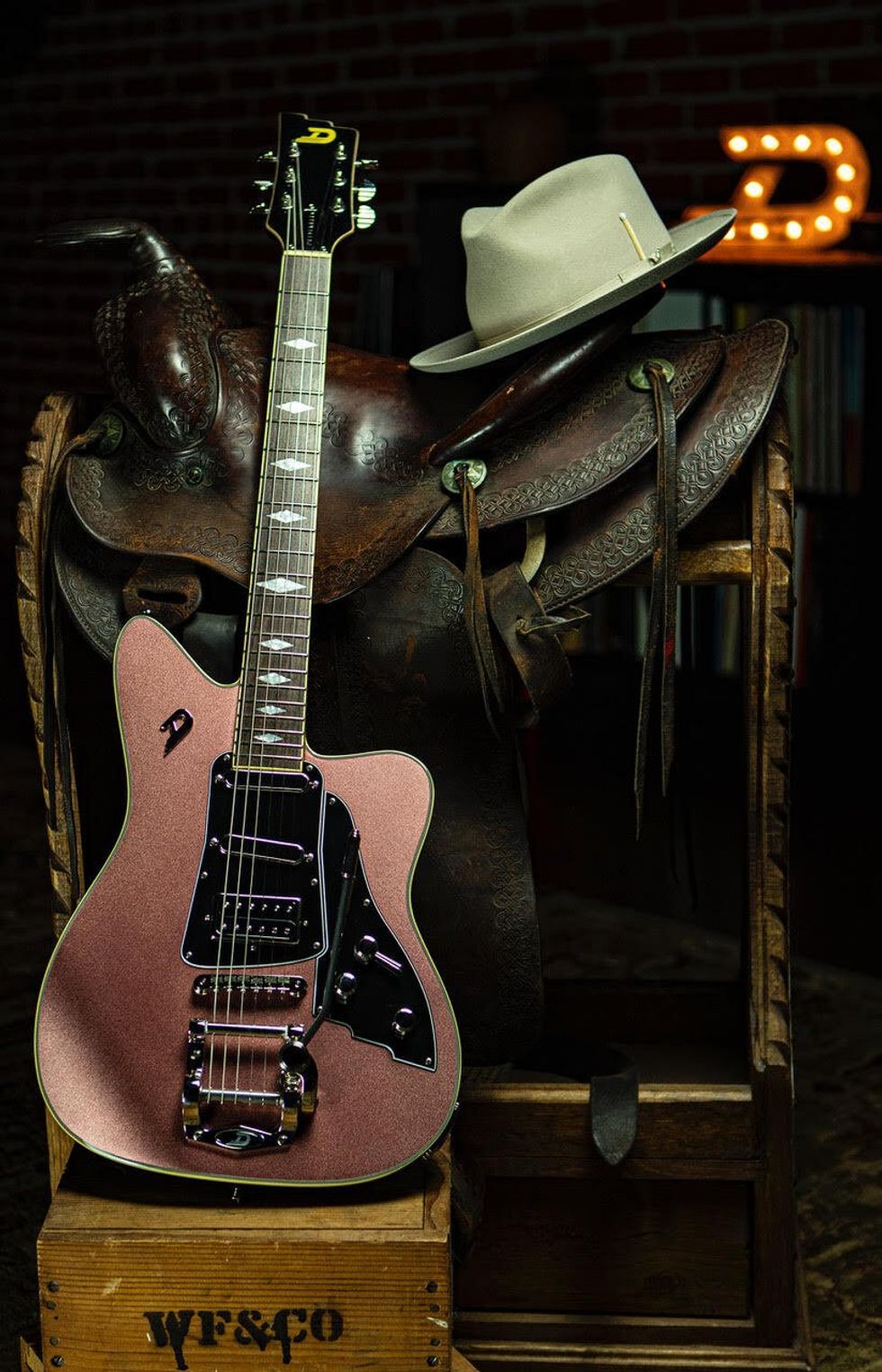
Here’s another eye-catching Duesenberg model, the Paloma in Catalina Sunset Rose, with suitably wild west surroundings. Other models currently in production include the Double Cat, Caribou, Falken, Senior, Julia, Starplayer Bass, Lapsteel, and Starplayer III.
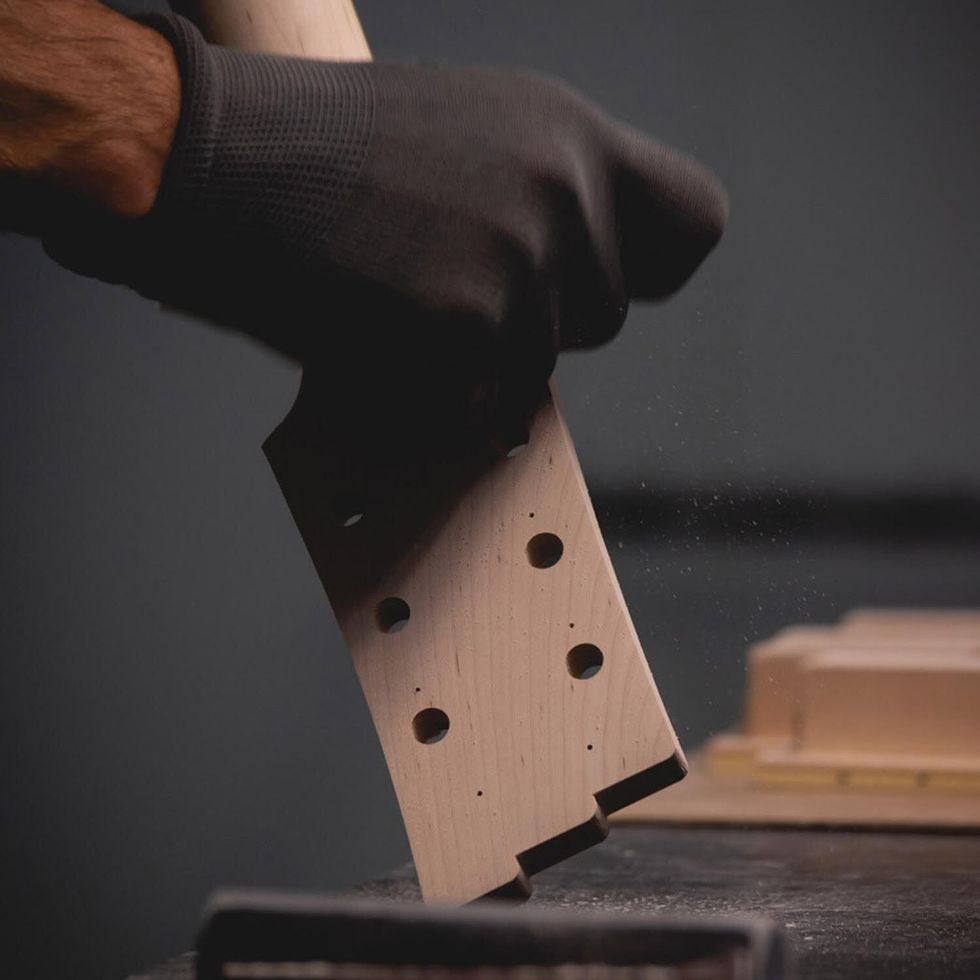
The final stage of building the Starplayer TV is setup and assembly. If you know anything about Duesenberg Guitars, you know the hardware is all proprietary, with a distinctive art-deco vibe. The Duesenberg tremolo bridge works on a unique steel needle and nylon bearing design. The pickups use silver-nickel components, and the tuners conceal the sharp string edges. This process for finishing instrument—including finalizing the neck, adjusting the pickups, and much more—is handled by a single luthier, who leaves a handwritten signature inside each instrument. The last step is playing each guitar, and then they’re moved on the quality control, where they are placed in its case and packed for shipping. Next stop? The guitar’s new owner.
You can learn even more about Duesenberg guitars by going to the company’s website at https://www.duesenbergusa.com/en/ or https://linktr.ee/iduesenberg You’ll find all the models currently in production including the Alliance Series, Starplayer TV, Double Cat, Caribou, Paloma, Falken, Senior, Julia, Starplayer Bass, Lapsteels, and Starplayer III.
Narration By: Nathan Fawley
Music By: Heinz Rebellius
A Film By: Andrej Lillak
Special Thanks:
Mike Campbell of Tom Petty and the Heartbreakers & The Dirty Knobs
Wolfgang Morenz of JORIS
All members of the Duesenberg team for their commitment to the Steel Strings


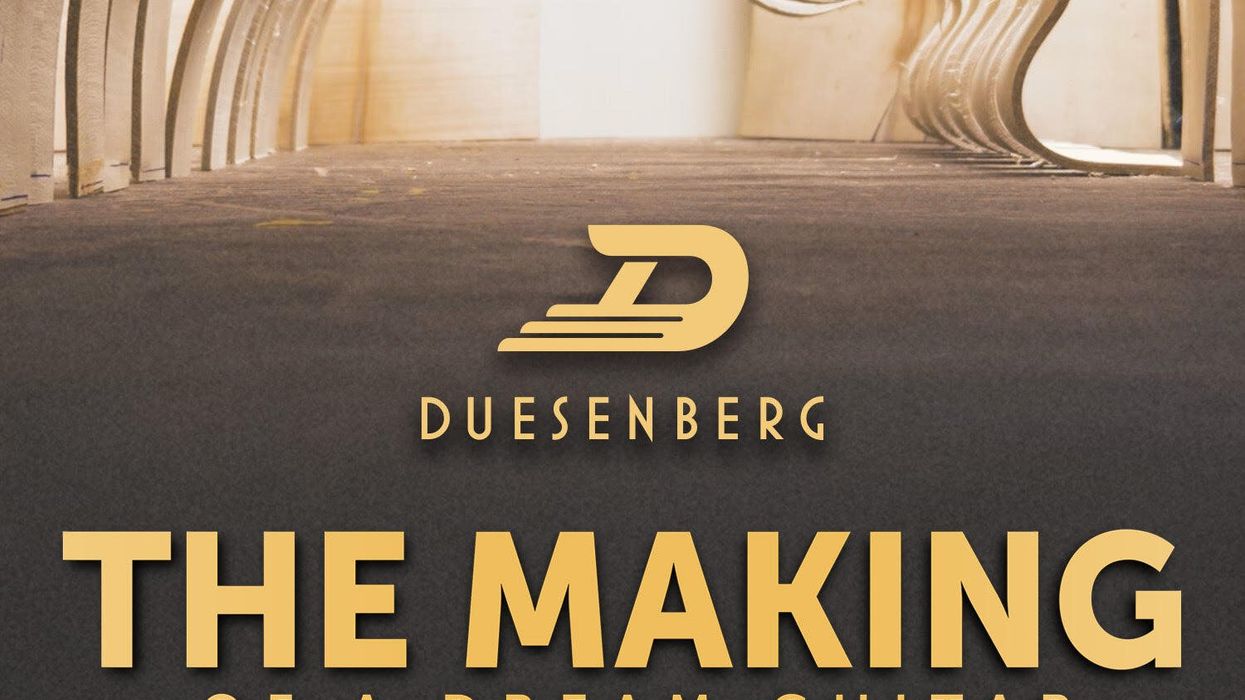
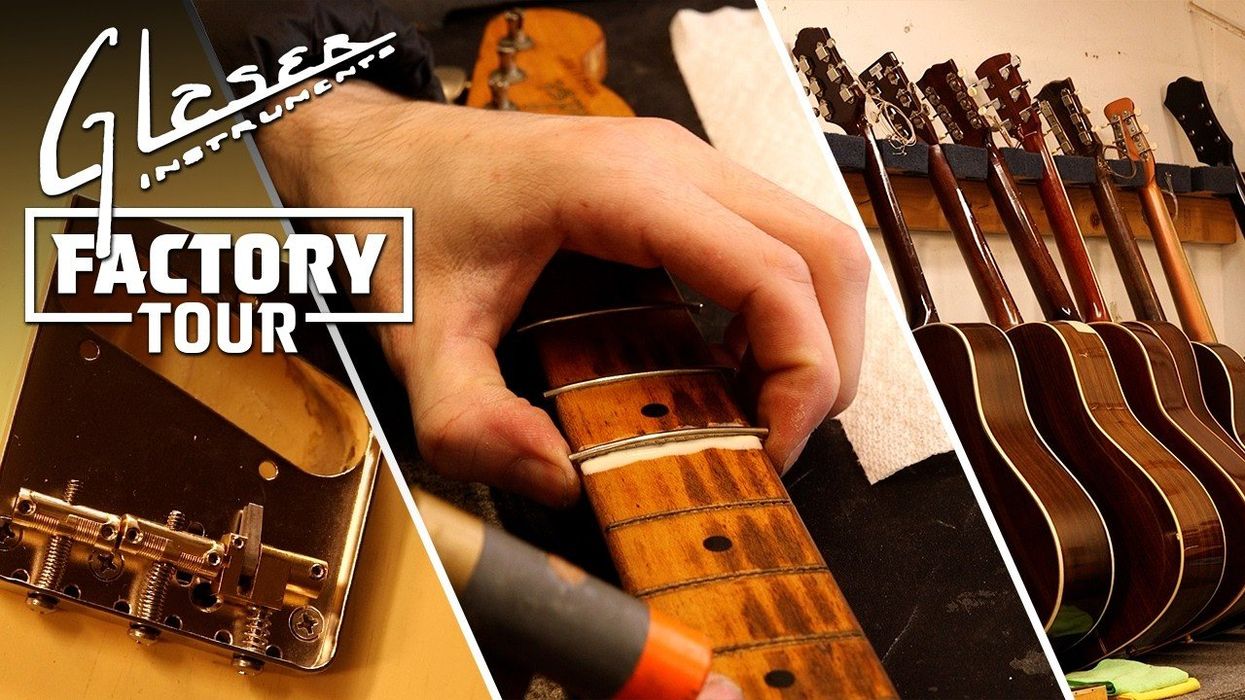
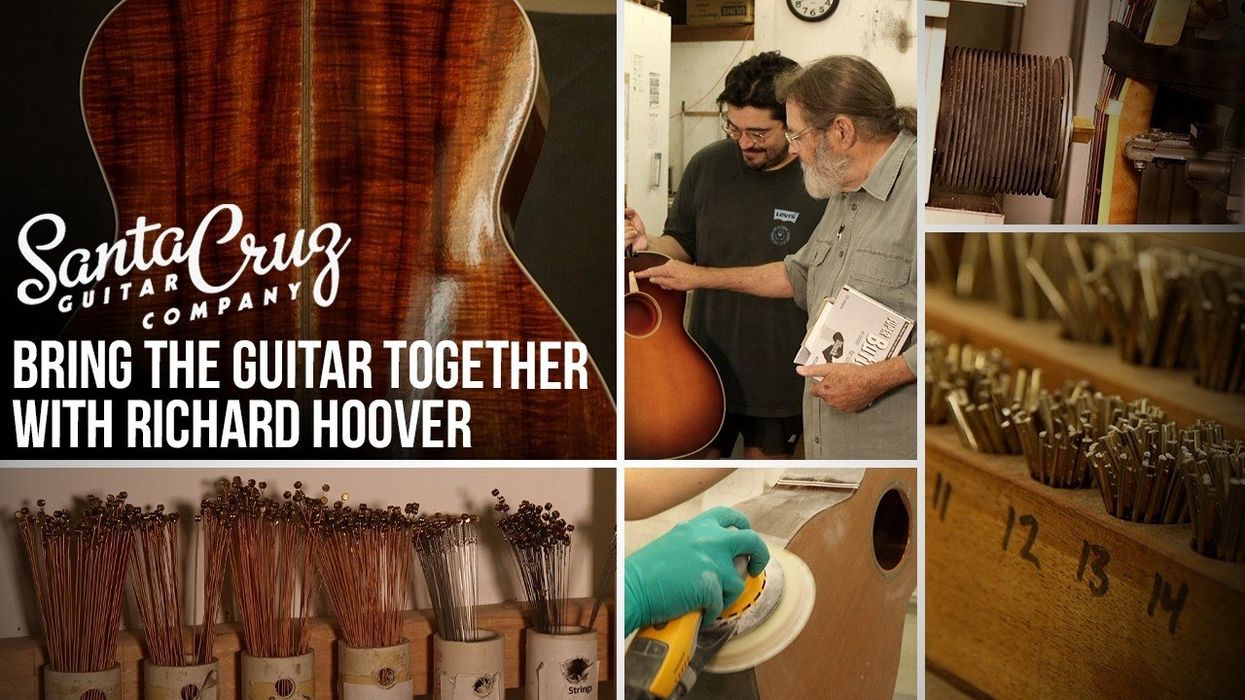
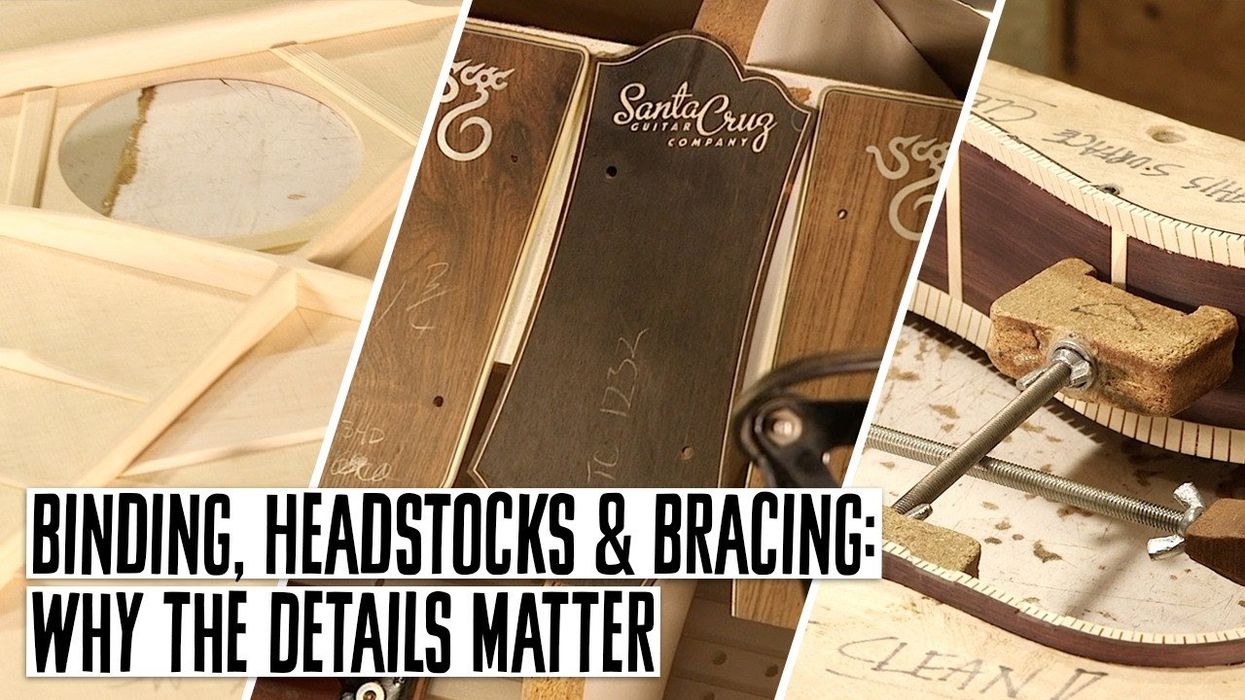
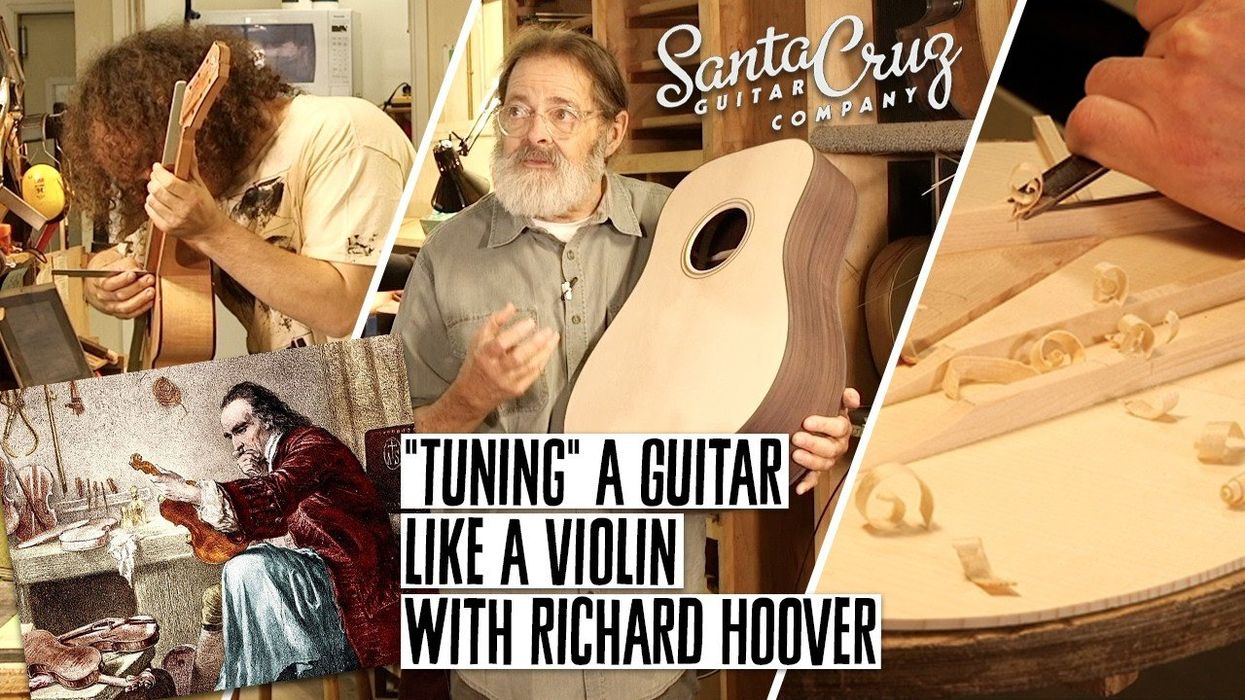
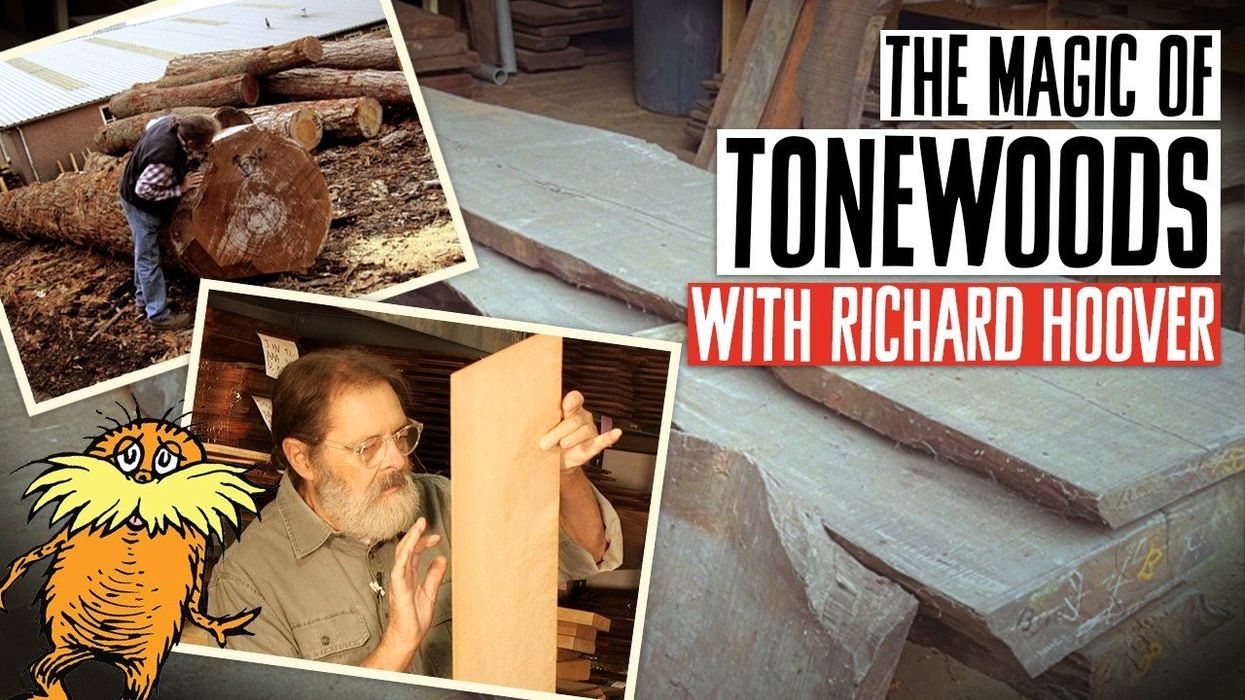


![Rig Rundown: Russian Circles’ Mike Sullivan [2025]](https://www.premierguitar.com/media-library/youtube.jpg?id=62303631&width=1245&height=700&quality=70&coordinates=0%2C0%2C0%2C0)



